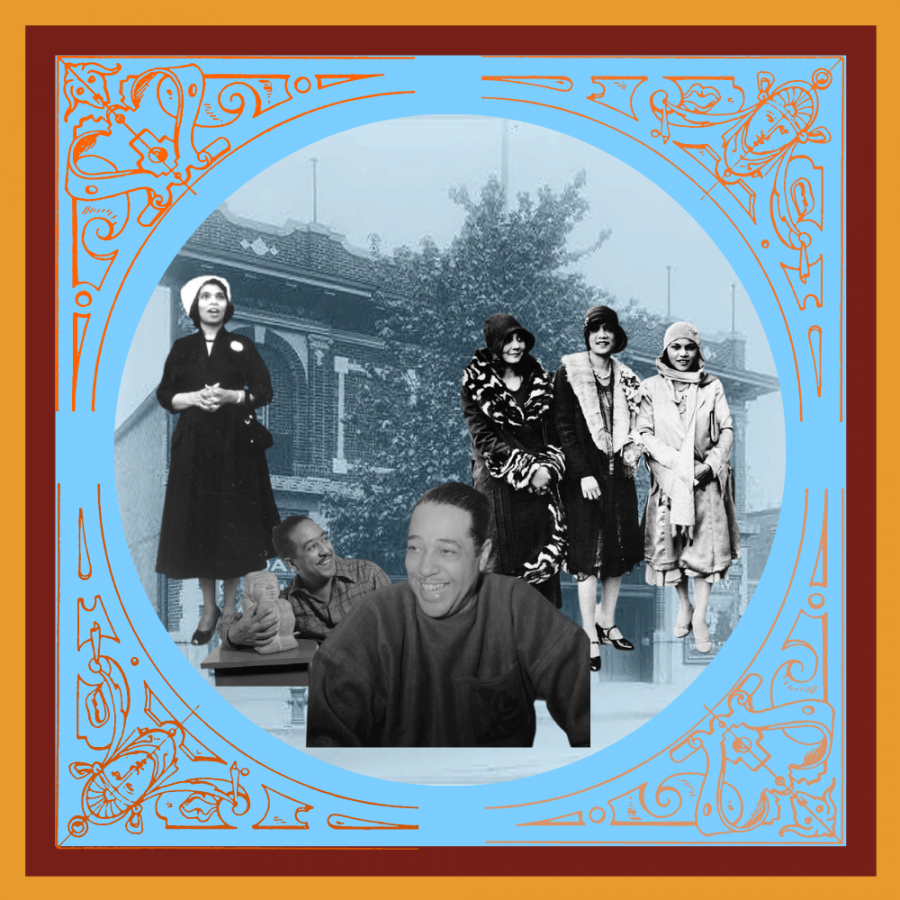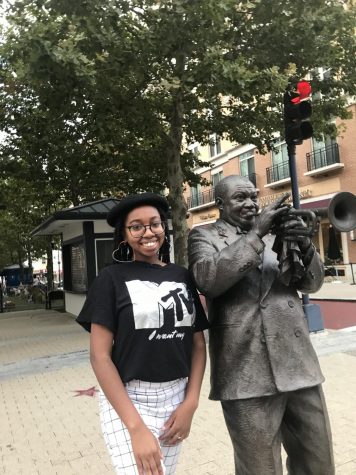While most are well aware of the European Renaissance and some of its prominent participants such as William Shakespeare and Michelangelo, it is rare for many to be even somewhat familiar with the Harlem Renaissance.
The Harlem Renaissance was extraordinary in the way it displayed Black activists, writers, musicians and performers who developed innovative ways of identifying and celebrating Black traditions, Black voices and Black ways of life.
While essentially a literary movement at its core, the Harlem Renaissance touched all of the African-American creative arts. It has no clearly defined beginning or end but emerged out of the social and intellectual upheaval in the African-American community after World War I, blossoming in the mid-to-late-1920s before fading away in the mid-1930s.
Embracing literary, musical, theatrical and visual arts, participants sought to reconceptualize ‘the Negro’ apart from the white stereotypes that had influenced Black peoples’ relationship to their heritage and to each other. The movement not only set the foundation for all African-American literature but had an immense impact on Black consciousness worldwide.
Harlem drew sensational intellect and talent, serving as the symbolic capital of this cultural awakening. Writers like James Welden Johnson, Claude McKay and Countee Cullen, poets like Langston Hughes, Paul Robeson, Sterling Brown and Virginia Huston, playwrights like Joseph Seamon Cotton and artists like Aaron Douglas and Lois Mailou Jones were all prominent figures of the Harlem Renaissance. They helped to implement and enhance the movement of Black pride among those who had been victims of white stereotypes and characterizations dehumanizing intelligence.
While many may not know all of the aforementioned virtuosos, their contributions helped usher in the Civil Rights Movement and paved the way for future geniuses in entertainment to change the world.
The term “Jazz Age” was used by many who saw African American music, especially the blues and jazz, as the defining features of the Renaissance. These genres were born from the African-American experience around the turn of the century in southern cities like New Orleans, Memphis and St. Louis and spread across the country, north to Chicago before arriving in New York a few years before World War I.
Duke “The Duke” Ellington, Louis “Satchmo” Armstrong, Marian Anderson, Earl “Fatha” Hines, Jelly Roll Marton, Roland Hayes and Bo Jangles amongst others, represented genres ranging from jazz to opera to the blues to tap.
Jelly Roll Morton claimed to have invented jazz there in 1902 but it is unlikely just one person holds that honor. Jazz reportedly originated among the musicians who played in the bars and brothels of New Orleans’ Storyville district. Blues performers such as musician W. C. Handy and vocalist Ma Rainey were popular on the Vaudeville circuit in the late 19th century. Handy’s “Memphis Blues” was released in 1912 and its first recordings a few years later brought this genre into the mainstream of American popular culture.
The visual arts came to Harlem sometime after music, musical theater and literature. Aaron Douglas, one of the most notable visual artists of the Harlem Renaissance, came to Harlem from Kansas City in 1925. Due to his personal affiliation with Hughes, Wallace Thurman and other African-American writers, Douglas’ collaboration with them became their literary magazine publication, Fire!!, and with his other successful artistic accomplishments, he quickly became the most high-profile artist clearly connected to the Harlem Renaissance in the mid to late 1920s.
Placing the Harlem Renaissance into just one location is almost as complex as defining its origins and duration. Of course, Harlem, New York, is central to the Harlem Renaissance, but it functions more as an anchor for the movement than as its sole location. The movement both drew from and spread its influence across the United States, the Caribbean and the world. Only a handful of the writers, artists, musicians and other prominent figures of the Harlem Renaissance were native to Harlem or New York, and only a relatively small number lived in Harlem throughout the Renaissance period. Even still, Harlem impacted the art, music, and writing of virtually all of the participants in the Harlem Renaissance.
Harlem refers to the part of Manhattan Island north of Central Park and generally east of Eighth Avenue or St. Nicholas Avenue. Originally developed in the 17th century as a Dutch village, the city was best suited for the wealthy and the upper-middle-class after the 1870s. It contained broad avenues, a rail connection to the city on Eighth Avenue, expensive homes and luxurious apartment buildings accompanied by modern commercial structures like synagogues, clubs, social organizations and even the Harlem Philharmonic Orchestra.
By 1920, due to its high population of Black people, Harlem served as the virtual capital of Black America. Truly, the city exuded certain magic that lured all classes of African-Americans from all sections of the country to its streets. Impoverished southern farmers and sharecroppers made their way northward where they were joined in Harlem by a multitude of Black intellectuals like W. E. B. Du Bois and James Weldon Johnson.
Although the old black social elites of Washington, DC and Philadelphia were disdainful of Harlem’s vulgar splendor – especially since it didn’t house a significant black university like the aforementioned cities – Harlem still became the race’s cultural center for its aspiring young and housed the National Urban League. It became the geographical focal point of African American literature, art, music and theater. Its nightclubs, music halls, and jazz joints became the nucleus of New York nightlife in the mid-1920s. In short, Harlem was where the action happened in Black America during the decade following World War I.
The Harlem Renaissance appealed to and relied on a mixed audience – African American middle class and white consumers of the arts. African American magazines such as the NAACP’s monthly journal, The Crisis, and the Urban League’s monthly publication, Opportunity, employed Harlem Renaissance writers on their editorial staff, published their poetry, illustrations as well as short stories and promoted African American literature through articles and reviews.
In addition Fire!!, which was short-lived, Thurman was the force behind another single-issue literary magazine, Harlem, in 1927, and poet Countee Cullen edited a “Negro Poets” issue of the avant-garde poetry magazine Palms in 1926 and published an anthology of African-American poetry, Caroling Dusk, in 1927. However, as important as these literary outlets were, they were not sufficient to support a literary movement.
The Harlem Renaissance relied heavily on white-owned enterprises for its creative works. Publishing houses, magazines, recording companies, theaters and art galleries were primarily white-owned which meant financial support through grants, prizes, and awards generally involved white money.
One of the major accomplishments of the Renaissance was to push open the door to mainstream periodicals, publishing houses and funding sources.
Harlem’s cabarets attracted both Harlem residents and white New Yorkers seeking out Harlem nightlife. The famous Cotton Club carried this to a bizarre degree, predominantly supplying Black entertainment for exclusively white audiences. Ultimately, the more successful Black musicians and entertainers moved their performances downtown.
While most African-American critics strongly supported the Harlem Renaissance as an overall movement, Black intellects like Benjamin Brawley and even Du Bois were sharply critical and accused Renaissance writers of reinforcing negative African American stereotypes, especially for white entertainment.
Hughes’ belief that Black artists intended to express themselves freely – no matter what the Black public or white public thought – accurately reflected the attitude of most writers and artists.
The end of the Harlem Renaissance is as difficult to define as its beginnings. It varies somewhat from one artistic field to another. In musical theater, the popularity of black musical reviews died out by the early 1930s – although there were occasional efforts, reviving the genre was mostly unsuccessful. However, Black performers and musicians continued to work, although not so often in all Black shows.
Black music continued into the World War II era. Jazz changed as the big band style became popular. Literature also changed and a new generation of Black writers rose to success with little interest in or connection with the Harlem Renaissance. A number of artists who gained notoriety in the 1930s continued to work, but still, there was no connection to a broader African-American movement.
While a number of Harlem Renaissance literary figures ended their careers, left Harlem, or died, some including Langston Hughes and Zora Neale Hurston continued to write and publish into the 1940s and beyond, although there was no longer any sense that they were connected to a literary movement. Harlem lost a lot of its sauce, following the 1935 race riot, and very few (if any) people were talking about a Harlem Renaissance by 1940.
Author Shelton Roseboro, a Harlem native, experienced the direct aftermath of the Harlem Renaissance era and reflected upon his time growing up in the city during the 1960s.
“The best thing about growing up in Harlem was the culture, no doubt,” Roseboro said. “We didn’t look at it as historical, it was just the way it was at that time.”
In regards to the massive fashion and art influence from the Harlem Renaissance, Roseboro remembers walking by the Cotton Club or seeing Harlem Renaissance figures like Duke Ellington and Cab Calloway come back to the city.
“When they would come, it was almost like a red carpet,” Roseboro added. “Back in those days, the people dressed up. Even the children dressed up. There weren’t sneakers. It was always slacks and dress shoes. Everybody was real neat. They looked like they had money with the way they dressed. They didn’t. We look back now and see that it wasn’t expensive but it was comparable to the decade.”
In the 1960s, the Civil Rights Movement was pressing, especially in Harlem, and it made its presence undeniably known as it did throughout the country.
Arturo Alfonso Schomberg, a major intellectual in the Harlem Renaissance, founded the Schomberg Center in Harlem where he collected literature and artwork to become the basis of the center. Today, it is called The Strombargh Center for Research in Black Culture and still works to provide literary education about the Black community for the Black community.
“I would read about the center in passing but I would say, ‘Oh, this is something interesting to have in the neighborhood,” Roseboro said. “Harlem was a great place to learn. There was so much going on.”
In Feb. 1965, Malcolm X was assassinated in Harlem, at the Audubon Ballroom. Formerly used as a multifunctional entertainment facility and known as the Audubon Theatre and Ballroom, it now serves as a memorial to the activist.
“Between the Black churches and the Black Panthers, we saw people like Malcolm X, Martin Luther King Jr. and Muhammad Ali was another one I would see,” Roseboro said. “We knew Elijah Mohammad, the leader of the Black Muslims. They had a masque on 116th Street. There were a lot of culture clashes, even within the Black community.”
Roseboro talked about a time where he would walk by the Black Panthers in his neighborhood.
“They’d be on one of the stoops in Harlem, keeping watch and would actually have rifles,” Roseboro said. “They wore afros and Black leather. I wasn’t ever afraid of them. I didn’t know who they were at the time but I knew they would never hurt me because I was Black.”
The Harlem Renaissance is a dynamic part of not only Black history but American history too. It changed the course of the city, the state of New York, the country and the world.
Although occurring nearly a century ago, the effects of the movement are still evident in the music we listen to, the literature we read and the art that moves our soul. Even if one has not read a tear-jerking Langston Hughes poem, listened to a moving masterpiece by Duke Ellington or seen a painting by Aaron Douglas, they have come into contact with their influences in some form of modern art.
Denying our culture and history will ultimately always backfire. Instead of forgetting the past, what has happened and who has come before us, we must embrace it in order to move forward with a wealth of knowledge.
Without a shadow of a doubt, the Harlem Renaissance changed the world and it’s worth remembering.
Trinity Bland is a junior studying television, film, media and Spanish. Follow her on Twitter @trinityaliciaa.












